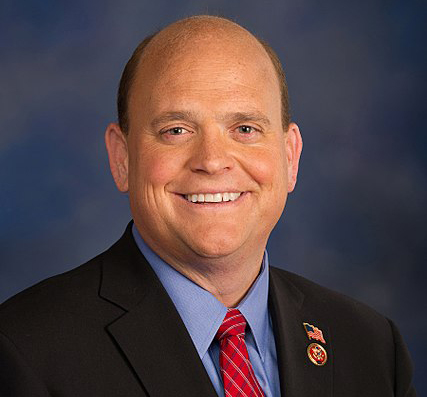 Tom Reed currently represents New York’s 23rd District. He serves as a member of the Ways and Means Committee, which is responsible for addressing issues of tax policy, trade, health care, and Social Security. He sits on the Trade, Health, and Human Resources subcommittees. He serves as Co-Chair of the Congressional Diabetes Caucus, the House Manufacturing Caucus, and the Problem Solvers Caucus.
Tom Reed currently represents New York’s 23rd District. He serves as a member of the Ways and Means Committee, which is responsible for addressing issues of tax policy, trade, health care, and Social Security. He sits on the Trade, Health, and Human Resources subcommittees. He serves as Co-Chair of the Congressional Diabetes Caucus, the House Manufacturing Caucus, and the Problem Solvers Caucus.
The Problem Solvers Caucus is a bipartisan group of representatives who vote as a block in Congress when they reach an agreement on an issue. The caucus recently presented a proposal for rebuilding America’s infrastructure.
The Problem Solvers Caucus: Proactively Combating Gridlock
In the beginning of last year, January 2017, we officially started the Problem Solvers Caucus…What we did is we adopted bylaws. We agreed that if we got to a 75% consensus position with 51% democratic support, 51% Republican support, we as a block of members would join arms and vote together. What it’s essentially doing is organizing us to get to “yes,” and the infrastructure issue is an area where we got to that 75% consensus. We issued a document, a platform, a framework that got bipartisan support – Problem Solvers Caucus Consensus Position. What we’ve been doing is things like healthcare, and we got to another position on immigration and border security and the budget cap situation. What we’re now, I think, being part of is the change of the culture of Washington, DC.
Organizing to Get to “Yes”
If you can at least organize and come to that common ground, and actually put your name on it like we did with the Problem Solvers Caucus Consensus Position, it carries much more weight…What you see in the Problem Solvers Caucus Infrastructure Proposal is exactly that. Much of this is common sense; much of this are things that the American people, I think, will look at and go, “That’s exactly what we’re looking for; that’s exactly the kind of reforms; that’s the kind of expansion of traditional infrastructure and the non-traditional infrastructure improvements like broadband that need to be done.”
Answering the Question: How Do We Pay for It?
I was one of the first in the Republican side of eight in Congress to endorse the president, spent many days in the Oval Office and in the Roosevelt Room with the President and his team. I know he’s committed to infrastructure. I know the administration’s committed to infrastructure…We in the Problem Solvers Caucus are looking at a trillion dollar number, the President’s looking at 1.5 trillion. I think we are going to be able to hit that target of the trillion dollars, not sure about 1.5 trillion but whatever we can do to reach the highest number possible. As a former mayor, I know that number is a realistic and reasonable amount that needs to occur to fix this problem…it’s going to take all players: local, state, federal and private dollars to get to that trillion dollar mark going forward–and some new creative sources of revenue that maybe we hadn’t even thought about before.
How Disruption Can Help Get the Job Done
There is an attitude of disruption that is sweeping over Washington, DC, and the Problem Solvers Caucus, I think, is the leading edge of the disruption when it says “Enough is enough.” Democrats versus Republican doesn’t do anybody good other than the elected officials and the political industry. It’s about getting the American people taken care of, and that’s what we came here to Washington to do…The time is right, the time is now and we know as Democrats and Republicans, it’s got to get done, so let’s get it done.
Citizens Can Finally Engage in the Process
The new way infrastructure dollars will be invested is through an open and transparent process. Look at the miscellaneous tariff bill reforms that we have put together on the Ways and Means Committee that deal with tariff reductions and how they are handled…What we want to do is have an open and transparent process where the American people and the next generation can be part of the process. We get into telemedicine, roads that are failing that may be on anyone’s horizon because we’re in a rural community way outside our state capitals. Have the power of that public input shape where these dollars need to go, because the people know best what is needed for their communities and for their local areas. Engage, engage, engage is the summary of my point to each and every one of them.
Download full transcript (PDF): Congressman Tom Reed on The Infra Blog
Tags: New York, NY, Problem Solvers Caucus, Tom Reed, Trump Administration






 RSS Feed
RSS Feed